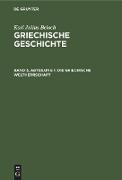PET/PET-CT Evidenz zum Bedarf und zur Planung in Deutschland und Österreich: Update 2018
BücherAngebote / Angebote:
Background
Hardly any other medical technology has been evaluated as often in the western countries as positron emission tomography (PET/PET-CT): this is an expression of uncertainty about the value of PET diagnostics in the care of patients. The present Health Technology Assessment (HTA) report updates the evidence on oncological indications and adds neurological indications and inflammatory diseases to the Austrian Ludwig Boltzmann Institute for Health Technology Assessment (LBI-HTA) report (2015). The report is intended to provide updated decision support for evidence-based PET/PET-CT planning in Germany and Austria. Methods A systematic literature search was performed in MEDLINE, EMBASE, PubMed, and the Cochrane Library to identify HTA reports, evidence-based guidelines (GL), and systematic reviews/meta-analysis (SR/MA), supplemented by a manual search for recommendations from (nuclear-medical, medical, and radiological) professional societies and explicit "not-to-do" recommendations. The quality of the included references was appraised using appropriate/validated tools. In addition, a search for new PET planning documents and a brief overview on PET/MRI was compiled. Results A total of 10 HTAs were included and 234 positive and negative recommendations from professional societies and databases were extracted, supplemented by the statements from 23 SR/MA. Evidence in oncological indications: Statements from 5 HTAs, recommendations and non-recommendations (n=188) from professionale societies as well as supplementary information from 12 SR/MA were taken into account for the update.
. There is (relative) consensus that there is sufficient evidence for sub-indications in 8 indications in favor of PET or PET-CT examinations: bronchial carcinoma (update: mainly pre-treatment, controversial in restaging and response control and in therapy monitoring), colon carcinoma, malignant lymphoma, malignant melanoma (update: for diagnosis of recurrence also come controversion), mamma carcinoma (treatment response, for diagnosis of recurrence) and head-neck tumors (in 2015 report: CUP, ThyroidCa, update: mainly for diagnosis of recurrence) and added by update: myeloma and neuroendocrine tumors.
. There is (relative) consensus in 8 indication areas that (too) little evidence in favor of PET examination (individual decisions possible) is available: bladder carcinoma, hepatic cancer, cervical carcinoma, gastric cancer, ovarian and uterus carcinoma, prostate cancer as well as paraneoplastic neurological syndrome.
. In further 8 indications there is controversial and inconclusive evidence and recommendations made with reservations: anal canal carcinoma, brain (esp. glioma), testicular-, kidney-, penile-carcinoma, esophagus cancer (except re-staging) and pancreatic carcinomas as well as bone and soft tissue tumors (+ GIST). Evidence in neurological indications: Statements from 2 HTAs, recommendations and non-recommendations (n=28) from professional socities as well as additional information from 3 SR/MA were taken into account. Evidence was identified and presented for two sub-indications (Alzheimer's dementia/dementia and epilepsy). There is consensus/(relative) agreement that there is not sufficient evidence in favor of a PET/PET-CT for either of these two sub-indications, though
. professional societies name specific cases of Alzheimer's dementia or specific conditions (patient characteristics) that speak for or against the PET application and also depend on the respective tracer (amyloid vs. FDG). These recommendations are based on a weak evidence base.
. Inconsistent/inconclusive evidence (controversial between HTA and GL) is given for the evaluation of patients with epilepsy (again, only in certain cases, in specialized epilepsy centres), though there is (some) consensus among the professional societies. Evidence in inflammatory indications/infections: Statements from 3 HTAs, recommendations and non-recommendations (n=18) from professional socities as well as supplementary information from 8 SR/MA were considered.
. There is (relative) consensus of sufficient evidence in favor of PET or PET-CT could be identified for infections of the vertebral column/ spondylodiscitis.
. In further 4 sub-indications there is controversial and inconclusive evidence: Periprosthetic joint infection, osteomyelitis, sarcoidosis and fever of unclear origin (FUO). First insights into the potential application of the hybrid PET-MRI indicate that no specific recommendations can currently be made for PET-MRI to be superior to PET-CT in routine clinical practice. This is mainly due to a lack of evidence. With regard to planning of PET or PET-CT, the update was unable to identify new literature and developments. However, a Canadian report (CADTH 2018) provides continuous data on 6 imaging techniques (including also PET-CT) and can be used as a basis for research, policy and planning. Furthermore, the US research projects at the CER (Center for Comparative Effectiveness Research in Cancer Imaging) investigating the benefits of PET/PET-CT want to create the basis for better planning. Conclusion and Recommendation Overall, the update 2018 resulted in more details and specifications compared to the LBI-HTA report 2015. The overall recommendations for indications (and also detailed recommendations for sub-indications) as well as the explicit non-recommendations from the LBI-HTA report 2015 and this update 2018 can serve as needs-based and evidence-based decision support for PET/ PET-CT service provision in German and Austrian hospitals.
Erscheint im Juni



